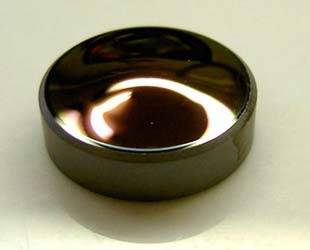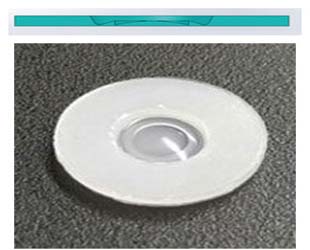Far Infrared Lenses
Using optical design, microfabrication, and precision molding technologies cultivated over many years with our unique manufacturing methods, we select or combine chalcogenide glass lenses and far-infrared resin lenses according to the applications and specifications to provide optimal aspherical lenses for far-infrared wavelengths. In addition to lens molding, we possess a group of technologies that can provide one-stop services, such as optical design, including Fresnel and free-form surfaces; functional coating design and manufacturing technologies, such as AR and DLC; and mechanical design, assembly, and adjustment for fabricating a lens assembly, enabling us to provide total optimal solutions.
Examples of products we offer
Aspheric Lenses for Far Infrared
Chalcogenide Glass Aspherical Lenses

Germanium (Ge) lenses, which are used as a material for far-infrared lenses, are made of a material that is expensive and which has poor processability, and to solve this problem, we offer chalcogenide glass-molded aspherical lenses. Konica Minolta handles arsenic-free materials that do not contain arsenic, which has a severe effect on the human body, and also develops unique arsenic- and selenium-free materials. In addition, we can provide diffraction geometry to compensate for wavelength dispersion and anti-reflective coatings according to specifications, and can handle in-house design, processing, evaluation, and production.
Far-Infrared Transmissive Resin Aspheric Lenses

Silicon (Si), the material used for far-infrared lenses in the low-pixel range, has poor processability, and to solve this problem, Konica Minolta offers resin-molded aspherical lenses with far-infrared transmission. The disadvantage of resin being highly absorptive in the far-infrared region has been addressed by utilizing Fresnel structure surfaces and reducing the lens thickness while ensuring optical performance. *Patent pending. We have also developed proprietary resin materials to accommodate higher-precision designs, and have added diffraction geometry to compensate for wavelength dispersion and anti-reflection structures (ARS) according to specifications, and can handle in-house design, processing, evaluation, and production.
For more information
For inquiries and document downloads, please click here.
Click here to contact us
Click here to download the document
